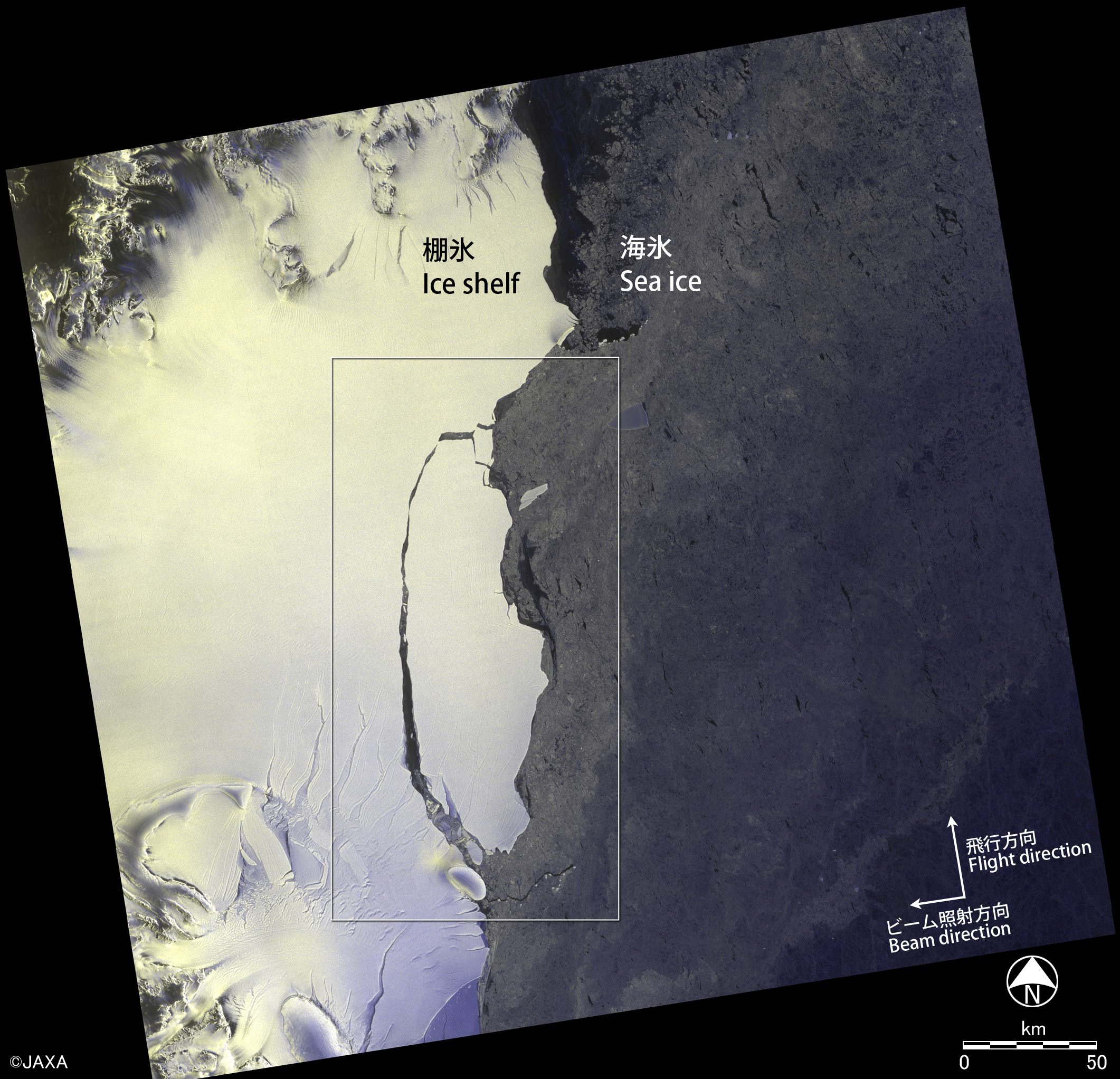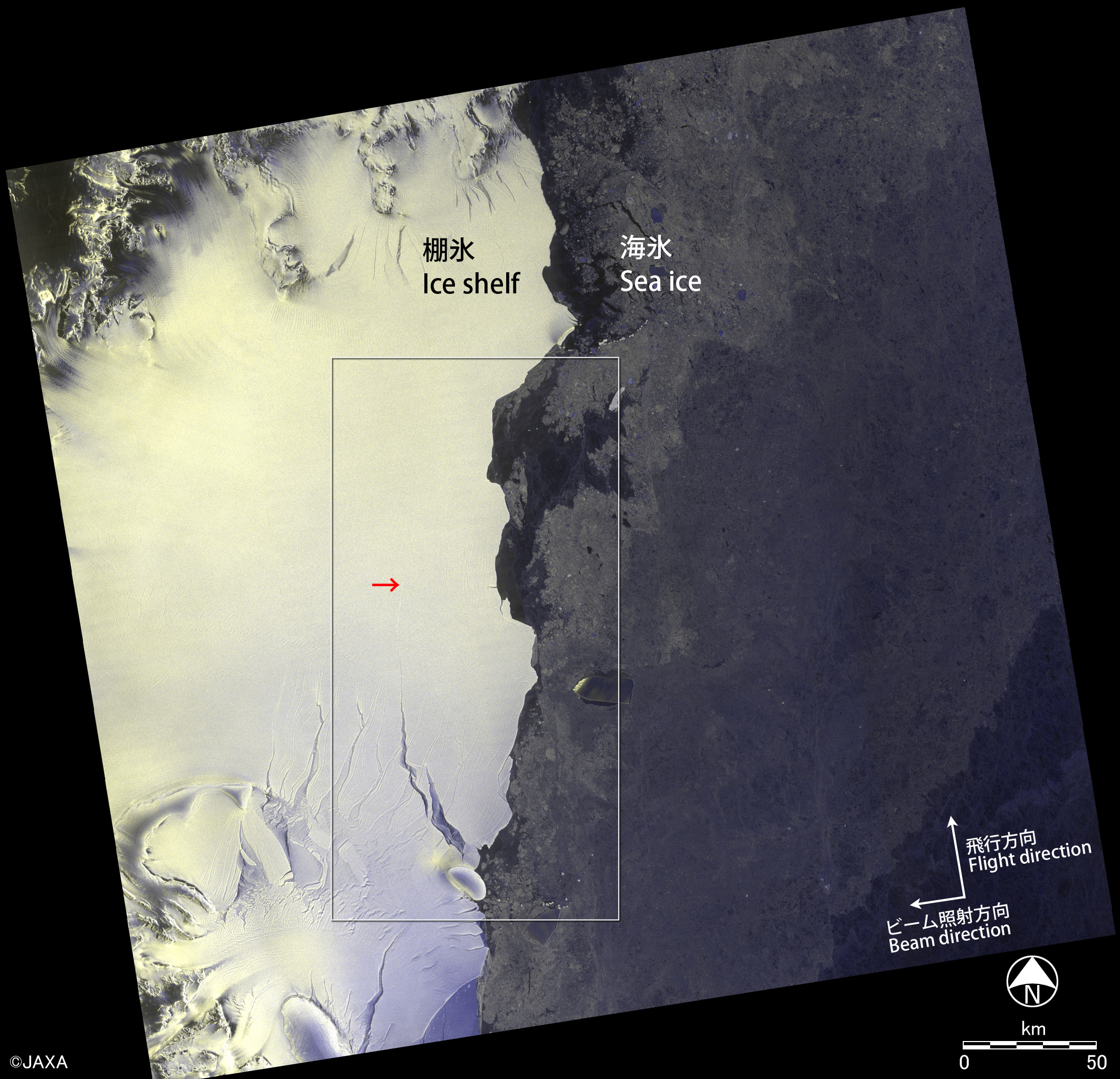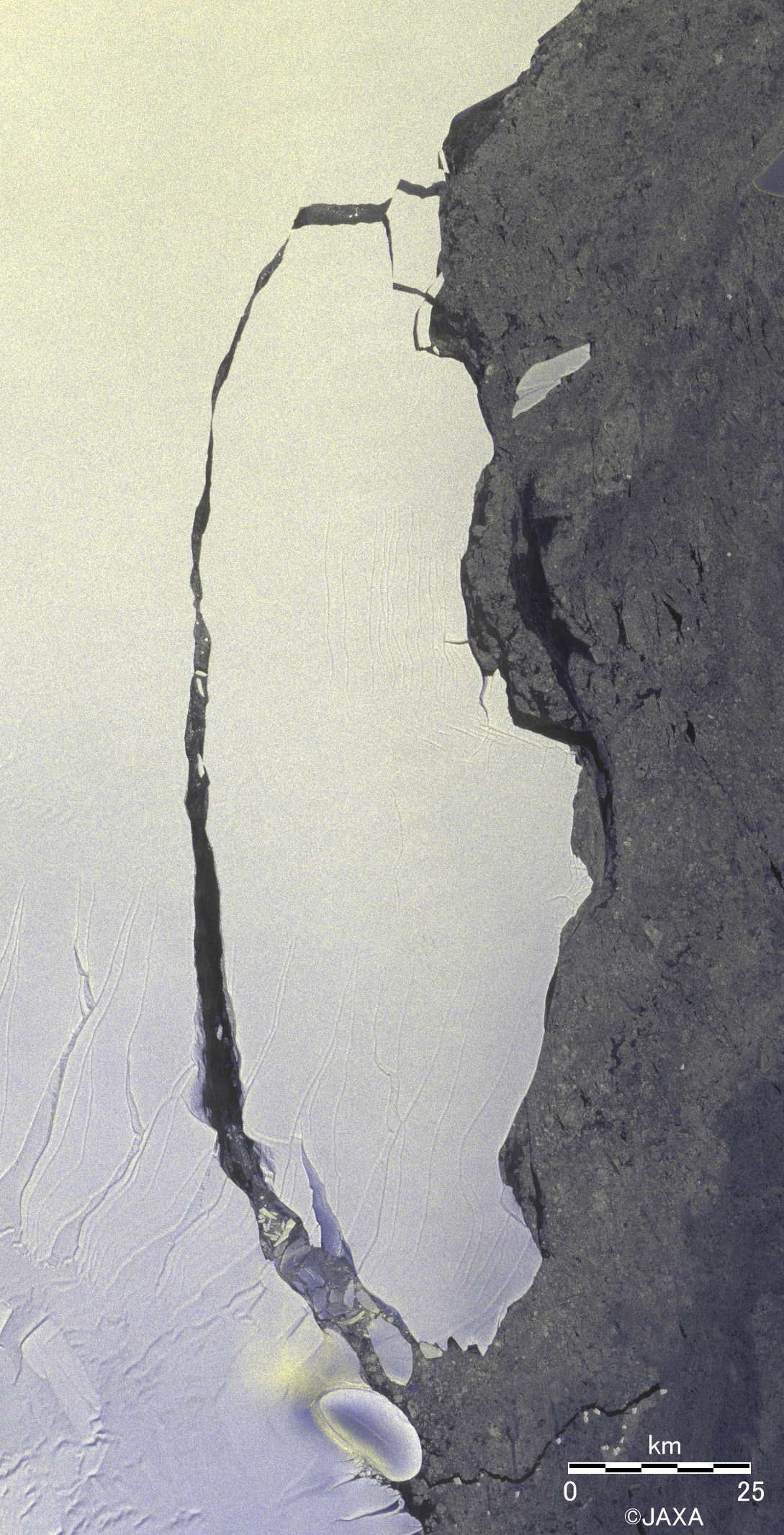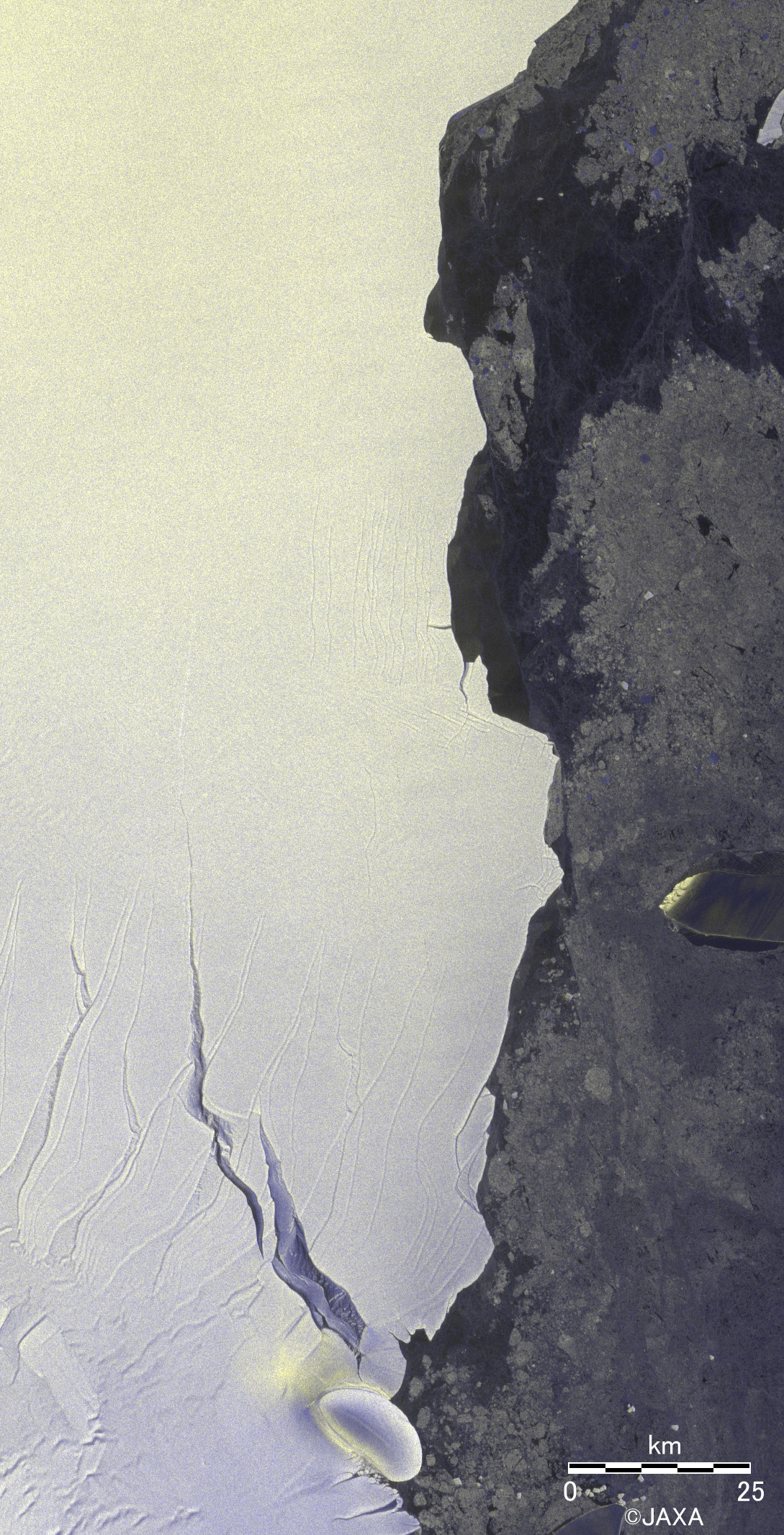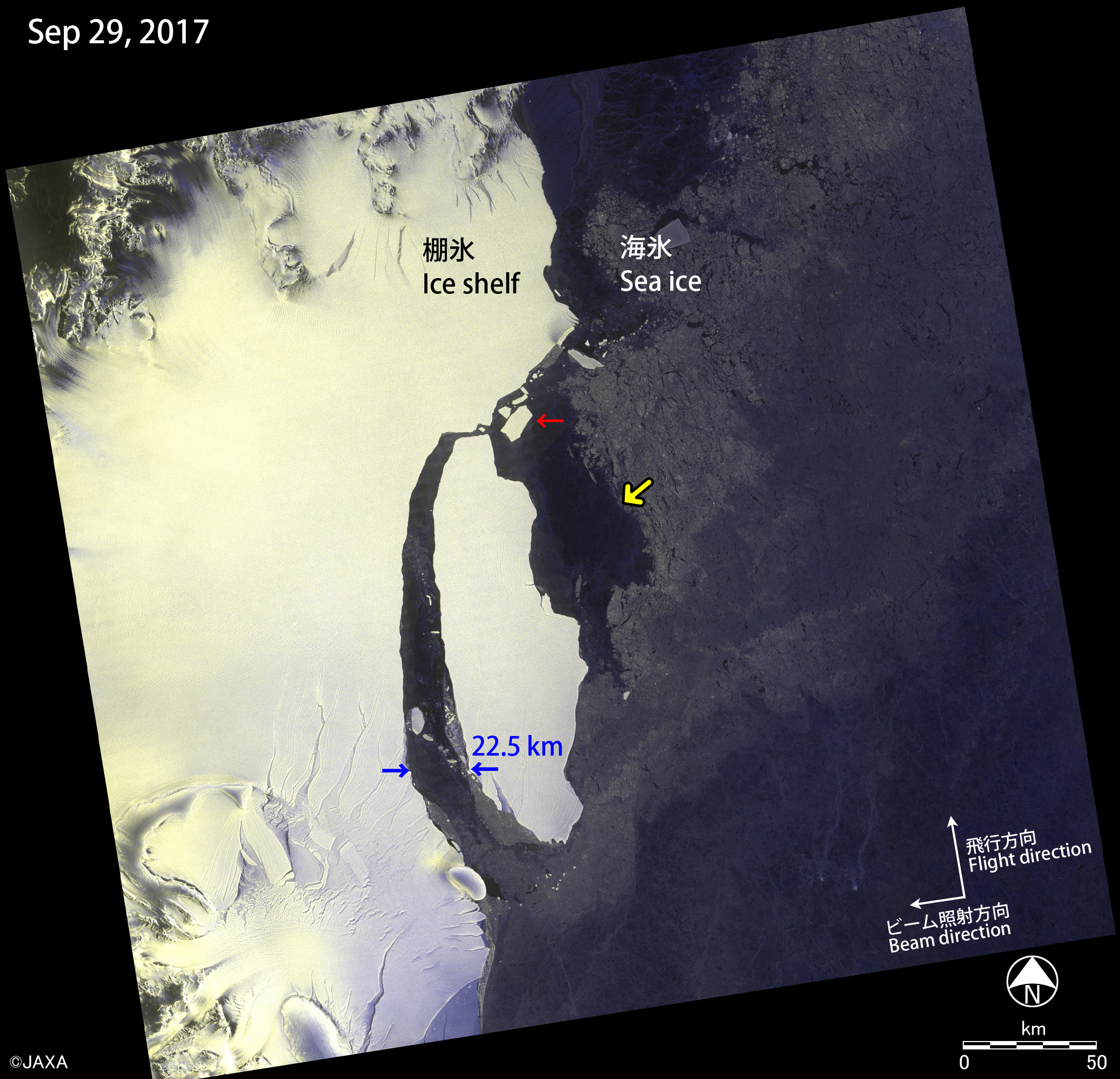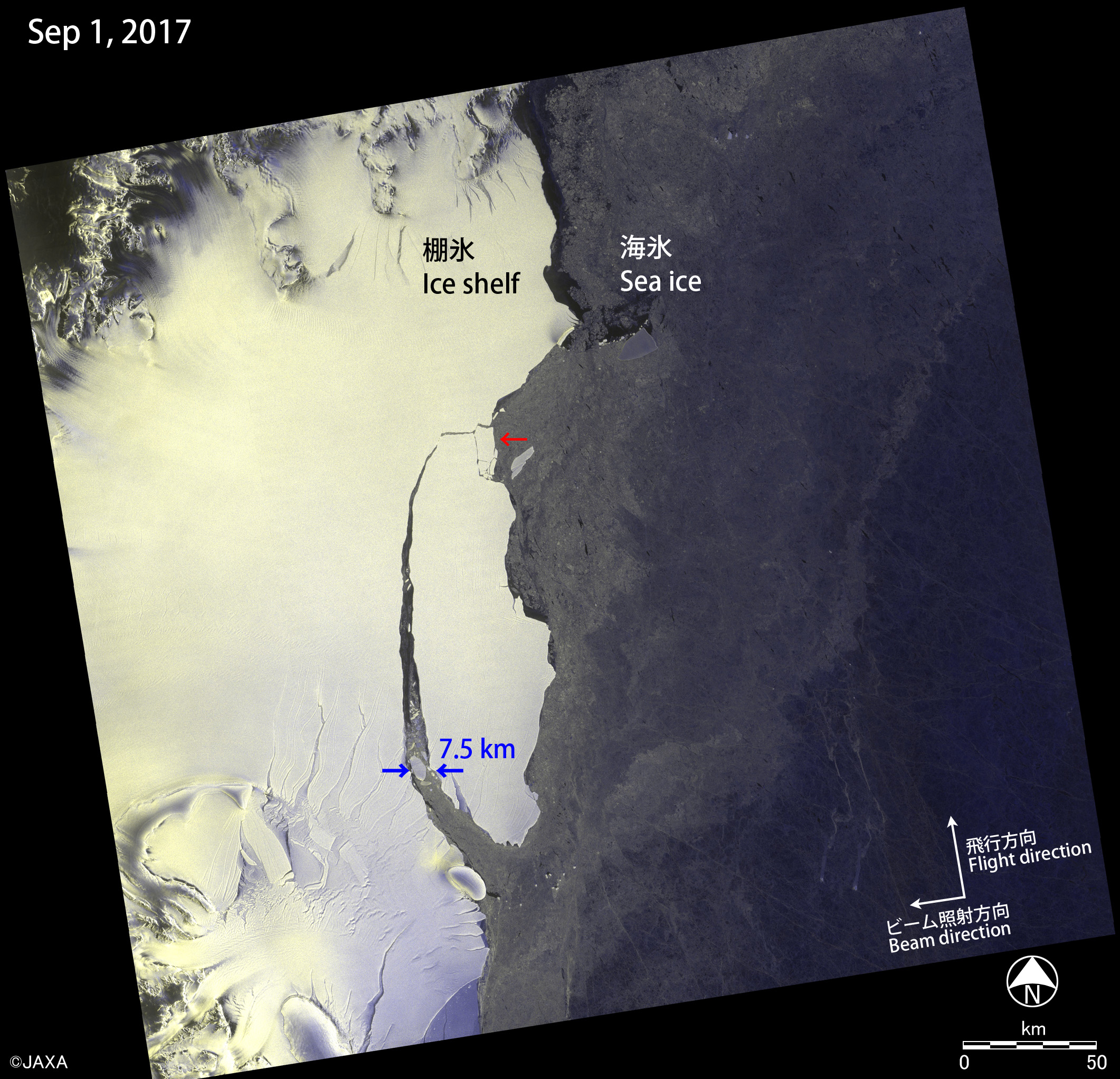
ALOS-2/PALSAR-2 Observation results on detachment of a large iceberg from Larsen-C Ice Shelf in Antarctic Peninsula.
Posted: Jul. 25, 2017, 7:30 (UTC)
Updated: Aug. 9, 2017, 7:30 (UTC)
Updated: Sep. 13, 2017, 2:00 (UTC)
Updated: Oct. 12, 2017, 8:00 (UTC)
Overview
- A huge iceberg detached from Larsen-C Ice Shelf in Antarctic Peninsula on 12th July, 2017.
- ALOS-2 ScanSAR observation on 21st July, 2017 revealed the entire portion of the detached iceberg.
- The observation image on 4th August, 2017 shows that the iceberg was pushed back toward the ice shelf by sea ice.
- The observation image on 1st September, 2017 shows that the iceberg again started to be away from the ice shelf.
- The observation image on 29th September, 2017 shows that the distance between the ice shelf and iceberg was larger than 20 km.
- We can contribute to understanding of global environmental change by monitoring cryospheric variation using ALOS-2.
Larsen is one of the huge ice shelves in Antarctica. Larsen-A and -B experienced the destructions in 1995 and 2002, respectively. Larsen Ice Shelf affects the ice loss in west Antarctica and its contribution to global sea level rise. Therefore, many glaciologists have paid much attention to their dynamics. On 12th July, 2017, a large iceberg separated from Larsen-C Ice Shelf, which is the expected weight of approx. one trillion ton, and the surface area is about 5,800 km2. Due to its size, ALOS-2 ScanSAR mode (Observation width: 350 km) is suitable for capturing the entire portion of the iceberg (Fig. 1).
 Fig.1: Observation area by ALOS-2.
Fig.1: Observation area by ALOS-2.
Fig.2: Color composite images acquired on 21st July 2017 (left) and 19th Aug 2016 (right). The rectangles show the areas in Fig. 3. (Click to view enlarged image)
Figure 2 shows the color-composite images (red: HV, green: HV and blue: HH polarization) observed by ScanSAR mode. Sea ice is seen in the right side on the image and the ice shelf is seen in the left side. The rectangular at the center of the image shows the area where the iceberg separated from the ice shelf. We can see a trace of crack on the ice shelf over 100 km from south to the red arrow in 2016 (right panel in Fig. 2). However, the crack is seen entirely on the ice shelf in 2017, which means the iceberg has been completely separated from the ice shelf (left panel in Fig. 2).
Fig.3: Enlarged images of the iceberg. (Click to view enlarged image)
Figure 3 shows the enlarged images of the iceberg. We can clearly confirm the crack on the ice shelf. This figure reveals that the size of the iceberg is about 50 km of the width and 150 km of the length. This huge iceberg detachment has a potential to accelerate ice speed on the inland ice shelf, which may enhance more iceberg detachment. Taking advantage of ALOS-2 that can obtain images regardless of weather and acquisition time, we can contribute to understanding of global environmental changes by monitoring Antarctic cryospheric variations. We are going to continue the observation by ALOS-2.
Update on Aug. 9, 2017
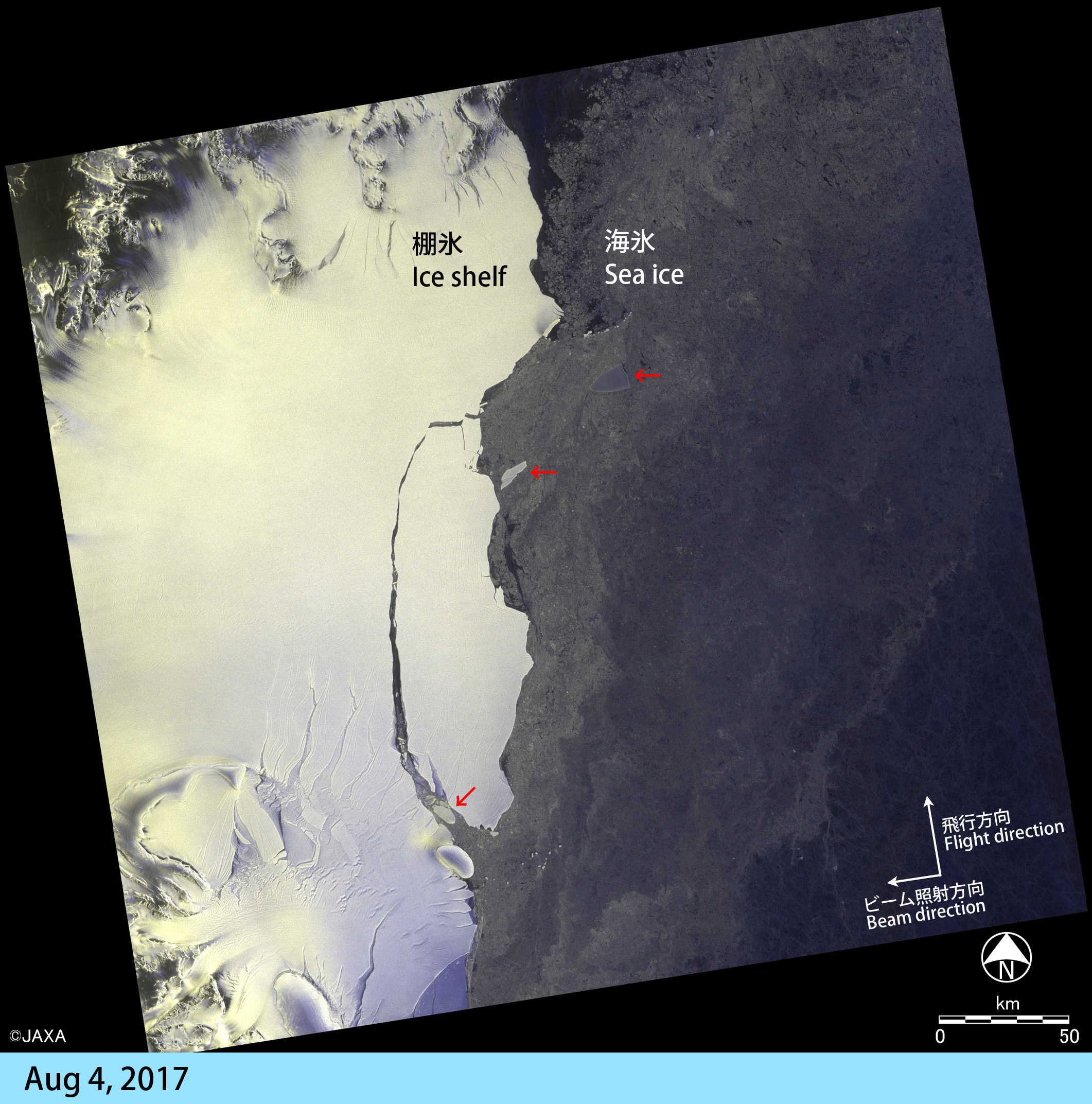

Fig.4: Interactive comparison of images on 4th August, 2017 and 21st July, 2017.
* Drag a slider over the image or click an arbitrary position in the images to compare the images.Figure 4 shows an interactive comparison of the color-composite images (red: HV, green: HV and blue: HH polarization) observed on 4th August, 2017 and 21st July, 2017. The width of the crack between the huge iceberg and the ice shelf on 4th August became smaller than that in 21st July. We have considered that sea ice has moved from the sea side toward the ice shelf, which pushed the huge iceberg. We can also see movements of some tiny icebergs in the figure (red arrows in Fig 4).
Update on Sep. 13, 2017

Fig.5: Animation movie composed of four observation images on 19th August, 2016,
21st July, 2017, 4st August, 2017, and 1st September, 2017.
Figure 5 shows an animation movie using four observation images including the latest image on 1st September, 2017. The image on 1st September shows that the iceberg separated again, and the width of crack between the ice shelf and the iceberg became largest so far. The comparison of images on 4th August and 21st July (Fig. 4) show that sea ice moved from the sea side toward the ice shelf, pushing the huge iceberg. However, the image on 1st September shows that sea ice and small icebergs injecting into the gap between the iceberg and the ice shelf may push the huge iceberg. The iceberg is expected to be away from the ice shelf, and we are going to continue the observation by ALOS-2.
21st July, 2017, 4st August, 2017, and 1st September, 2017.
Update on Oct. 12, 2017
Fig.6: Interactive comparison of images on 29th September, 2017 (left) and 1st September, 2017 (right).
(Click to view enlarged image)
Figure 6 shows an interactive comparison of the color-composite images (red: HV, green: HV and blue: HH polarization) observed on 29th September, 2017 (left) and 1st September, 2017 (right). The image on 29th September shows that the width of the crack between the huge iceberg and the ice shelf became 20 km larger than that in 1st September (blue arrows). We have considered that the sea ice around the iceberg has been thinning with the progress of season (yellow arrow) and that the force of sea ice pushing toward the ice shelf has been weakening. Moreover, a small iceberg calved from the huge iceberg (red arrow). The huge iceberg is estimated to flow offshore, and we are going to continue the observation by ALOS-2.
(Click to view enlarged image)
Reference: http://www.projectmidas.org/blog/calving/
© JAXA EORC
